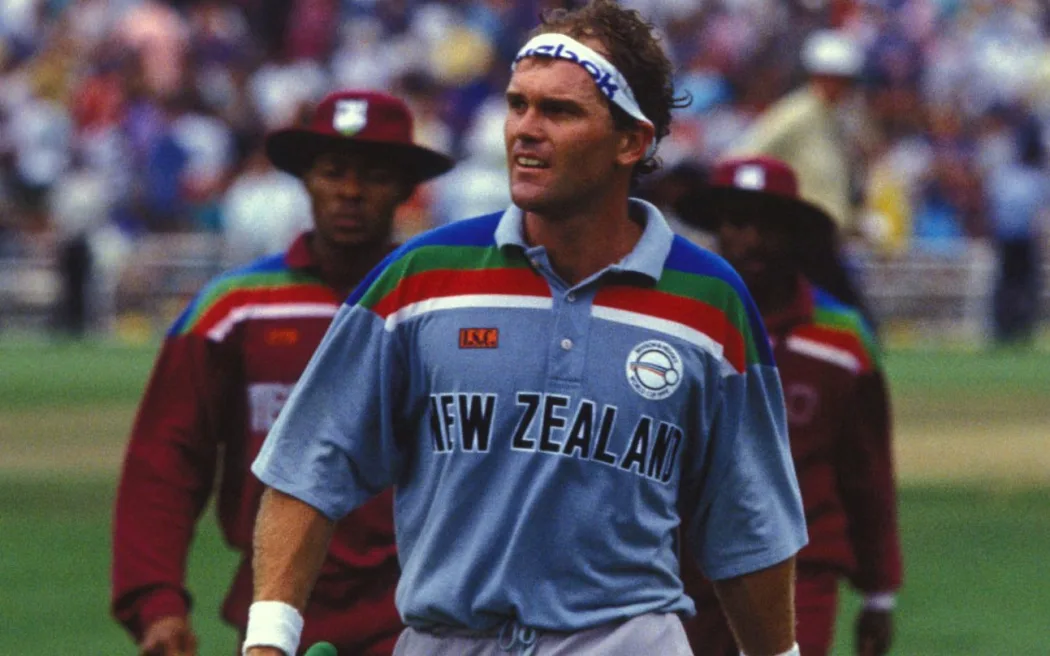
Martin Crowe, often described as “the lazy elegance”, was one of the most prolific batsmen in the history of cricket. The legendary cricketer played a key role in bringing New Zealand cricket to world prominence.
The Legendry Elegance Of Martin Crowe
The Kiwi was recognized for his stylish batting and classy batting techniques. From attack to defence, or taking a stance, Crowe had elegance written all over him. He had a range of shots up his sleeves and made batting look easy on any surface.
Ranking Crowe in his top 100 Test cricketers of all time, Aussie legend Shane Warne said that the New Zealand batter had a full range of shots and handled spin and pace equally well.
“He was such a stylish and elegant player, with a touch of grace and the same skills as the best Indian players of picking up a length very early,” Warne remarked.

Born on September 22, 1962, Crowe made a rapid rise in the field of cricket. He made his First Class debut for Auckland at 17, became one of few young Kiwi cricketers at 18 and received a national cap for the senior New Zealand team at 19. Hailing from a cricketing family, Crowe followed the footsteps of his father Dave who played first grade and brother Jeff who also captained the New Zealand cricket team.
Crowe made his Test debut for the Black Caps on February 26, 1982 against Australia. He featured in a total of 77 Test matches for New Zealand in his 14-years of international cricketing career. The batter amassed 5444 runs in 131 innings at an average of 45.36 with a strike rate of 44.65.
When Crowe retired from international cricket in 1995, he was the owner of a number of batting records in New Zealand cricketing history, including most Test runs (5,444), highest Test score (299), most 50s (35) and most hundreds (17). Crowe’s 380 run feast against England in a three Test series will be considered his best.
An Attacking Leader
The Kiwi took over the captaincy of the New Zealand cricket team in 1990, and led the team until 1993. The then skipper led the Black Caps to the finals of the 1992 World Cup. He was renowned as an attacking, innovative and a daring leader. He, alongside Richard Hadlee, formed a formidable Kiwi pair through the mid-80s.
Martin Crowe was the first cricketer to receive the ICC Player of the Tournament award in the 1992 World Cup as that was the year the honor was introduced by the cricketing body.

Crowe’s love for playing an attacking game can be gauged from the fact that he initiated the now-defunct ‘Cricket Max’ in New Zealand, which was a short version of cricket game, very similar to what is known as T20 today.
Martin Crowe will be remembered as one of the cricketers who could not touch the pinnacle of his potential. This is due to his injury-prone cricketing career. The Auckland-born cricketer sustained numerous injuries and was compelled to retire at just 32. Crowe was inducted into the ICC Hall of Fame on February 28, 2015 at Eden Park, becoming the third Kiwi to receive the honor after Sir Richard Hadlee and Debbie Hockley.
Also Read: Unsung Heroes of New Zealand Cricket
Death
Crowe passed away on March 3, 2016 after a prolonged battle with cancer at the age of 53. diagnosed with follicular lymphoma in October 2012 and underwent treatment for the cancer but it recurred in September 2014. His untimely demise had shocked the cricketing fraternity.
The Kiwi blamed the illness on a failing immune system which had been weakened by various illnesses that he picked up while touring India in the 1980s and 1990s. He made his last public appearance when he attended the 2015 Cricket World Cup Final between Australia and New Zealand at the Melbourne Cricket Ground.




